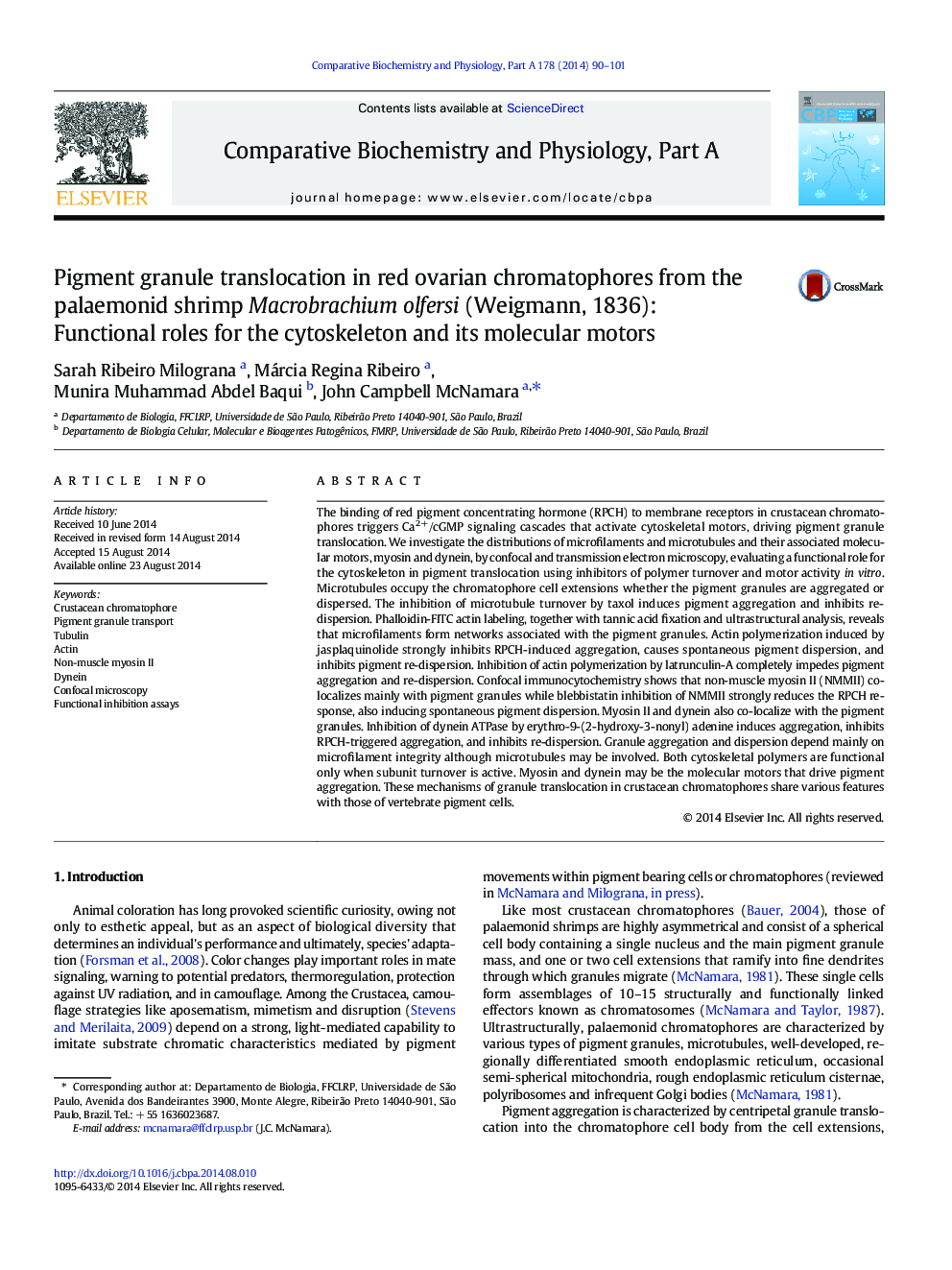| کد مقاله | کد نشریه | سال انتشار | مقاله انگلیسی | نسخه تمام متن |
|---|---|---|---|---|
| 1972171 | 1539009 | 2014 | 12 صفحه PDF | دانلود رایگان |

The binding of red pigment concentrating hormone (RPCH) to membrane receptors in crustacean chromatophores triggers Ca2+/cGMP signaling cascades that activate cytoskeletal motors, driving pigment granule translocation. We investigate the distributions of microfilaments and microtubules and their associated molecular motors, myosin and dynein, by confocal and transmission electron microscopy, evaluating a functional role for the cytoskeleton in pigment translocation using inhibitors of polymer turnover and motor activity in vitro. Microtubules occupy the chromatophore cell extensions whether the pigment granules are aggregated or dispersed. The inhibition of microtubule turnover by taxol induces pigment aggregation and inhibits re-dispersion. Phalloidin-FITC actin labeling, together with tannic acid fixation and ultrastructural analysis, reveals that microfilaments form networks associated with the pigment granules. Actin polymerization induced by jasplaquinolide strongly inhibits RPCH-induced aggregation, causes spontaneous pigment dispersion, and inhibits pigment re-dispersion. Inhibition of actin polymerization by latrunculin-A completely impedes pigment aggregation and re-dispersion. Confocal immunocytochemistry shows that non-muscle myosin II (NMMII) co-localizes mainly with pigment granules while blebbistatin inhibition of NMMII strongly reduces the RPCH response, also inducing spontaneous pigment dispersion. Myosin II and dynein also co-localize with the pigment granules. Inhibition of dynein ATPase by erythro-9-(2-hydroxy-3-nonyl) adenine induces aggregation, inhibits RPCH-triggered aggregation, and inhibits re-dispersion. Granule aggregation and dispersion depend mainly on microfilament integrity although microtubules may be involved. Both cytoskeletal polymers are functional only when subunit turnover is active. Myosin and dynein may be the molecular motors that drive pigment aggregation. These mechanisms of granule translocation in crustacean chromatophores share various features with those of vertebrate pigment cells.
Journal: Comparative Biochemistry and Physiology Part A: Molecular & Integrative Physiology - Volume 178, December 2014, Pages 90–101